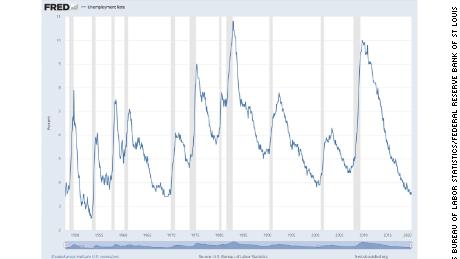His claims make sense as a matter of bombastic Trumpian politics. All presidential incumbents surf positive economic developments on their watch in asking voters for another term. But as a matter of economics, the President’s words ring as empty as his musings on North Korean denuclearization or his still
non-existent proposal to replace the Affordable Care Act. Each of Trump’s core economic claims lacks merit.
This latest contretemps got underway after former President Barack Obama sent a tweet commemorating the 11th anniversary of the Recovery Act he signed in the depths of the Great Recession he had inherited. Obama linked that $787-billion stimulus measure with the decade of economic growth, and record-long streak of job creation, that followed.
Those are unremarkable statements of fact.
National Bureau of Economic Research analysis shows that the recession, which began in December 2007 under President George W. Bush, ended five months after the Recovery Act took effect in Obama’s first year.
The following year,
Bureau of Labor Statistics data shows, American businesses definitively stopped shedding jobs. The overall economy and private sector payrolls have grown non-stop ever since.
Trump’s accusation of a “con job” referred to Obama’s tweet. The real-estate developer turned President insisted his predecessor had taken credit for an “Economic Boom taking place under the Trump administration.”
He also claimed the United States would have faced “big economic (Depression?)” had Democrats held the presidency in the last election. That claim lacks any basis whatsoever.
During Obama’s second term, annual economic growth rose from 1.8% in 2013, to 2.5% in 2014, to 2.9% in 2015. In his final year, growth receded to 1.6%.
But in August 2016, with Hillary Clinton favored to keep the White House in Democratic hands by beating Trump that November, the Congressional Budget Office forecast another acceleration. The nonpartisan office predicted the economy would grow 2.4% in 2017 before gradually settling back to a 1.9% rate in the following decade.
The growth rate during Trump’s first year in office: precisely the 2.4% rate the Congressional Budget Office had predicted before he won.
Growth revved up again in 2018 after Trump and congressional Republicans enacted their own stimulus in the form of tax cuts and spending increases. It didn’t reach the 3+% levels the White House had predicted, but at least it matched Obama’s 2.9% mark from three years earlier.
Now the economy has slowed again. In its latest long-term forecast last month,
the Congressional Budget Office envisions growth of 1.7% per year — slightly lower than before Trump’s presidency began.
Fundamental economic conditions shape the outlook for growth more than the policies of any president. But economists from both parties and Wall Street alike agree that Trump’s start-and-stop trade conflicts have sapped national output by raising prices and dampening business investment. One other notable shift: the federal budget deficit has risen sharply from the levels Obama handed him.
So the Trump economy remains on essentially the same path as the one Obama bequeathed to him. Contrary to his claims, Trump did not steer the economy away from looming disaster toward an unlikely boom.
The high-profile indicators Trump loves to cite also confirm the pattern.
Trump’s tweetstorm claimed the “best jobs numbers ever.” But average monthly job growth has declined from 224,000 during Obama’s last three years to 182,000 during Trump’s first three.
The unemployment rate has fallen to 3.6% last month from 4.7% in January 2017 as Trump took office. Yet that merely continued the trend of the last six years of Obama’s term.
Not even the booming financial markets that cheer Trump’s tax-cuts and deregulation initiatives show the dramatic turnaround Trump claims while assailing his predecessor.
Since Trump assumed the presidency in January 2017, the Dow Jones Industrial Average has risen by 47%, as of about 3 p.m. ET on Tuesday. During Obama’s second term, the Dow rose 44%.




























